Volume 2, Number 48 - Thursday, May 23
Published every Monday and Thursday
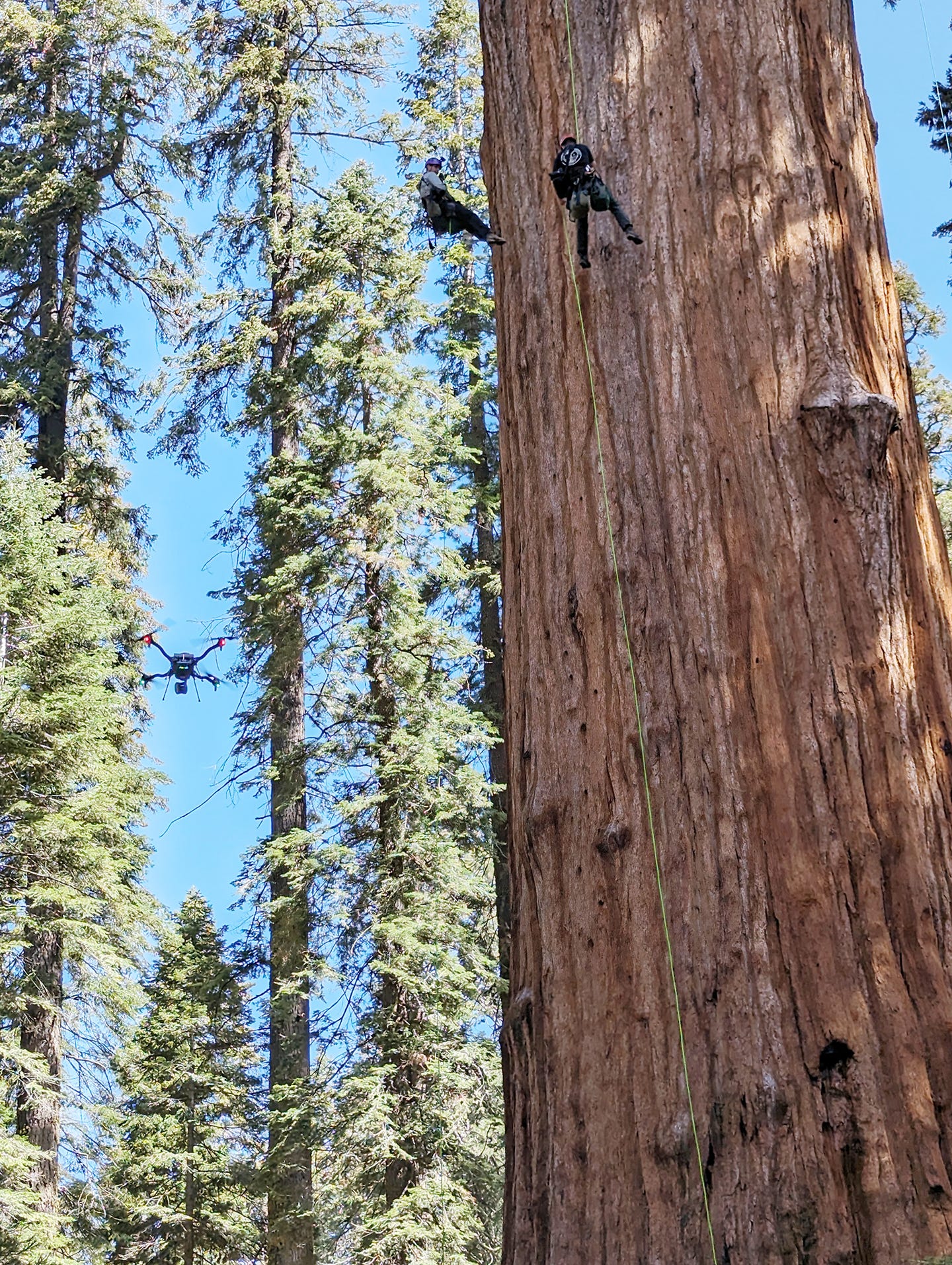
Perspective
LUCKY ME! So far this month I’ve made trips to see giant sequoias in two groves — and have two more on my calendar. You can read about the event I covered in Sequoia National Park on Tuesday below — and I’m still working on some articles about last Thursday’s trip to the Black Mountain grove.
I’m hoping to make it to the Mariposa Grove in Yosemite on May 31, and on June 1, I plan to join Brenda Negley of Friends of Nelder Grove to see that grove. If you’re interested in joining one of a very few opportunities to visit Nelder Grove this year, there is more information HERE.
Tulare County’s Balch Park and adjacent Mountain Home Demonstration State Forest will reopen to the public sometime in June for the first time since 2022. You can read my story about that in an article published yesterday in The Porterville Recorder (HERE), and I will get up to see those trees soon after the reopening.
Stay tuned! — Claudia Elliott
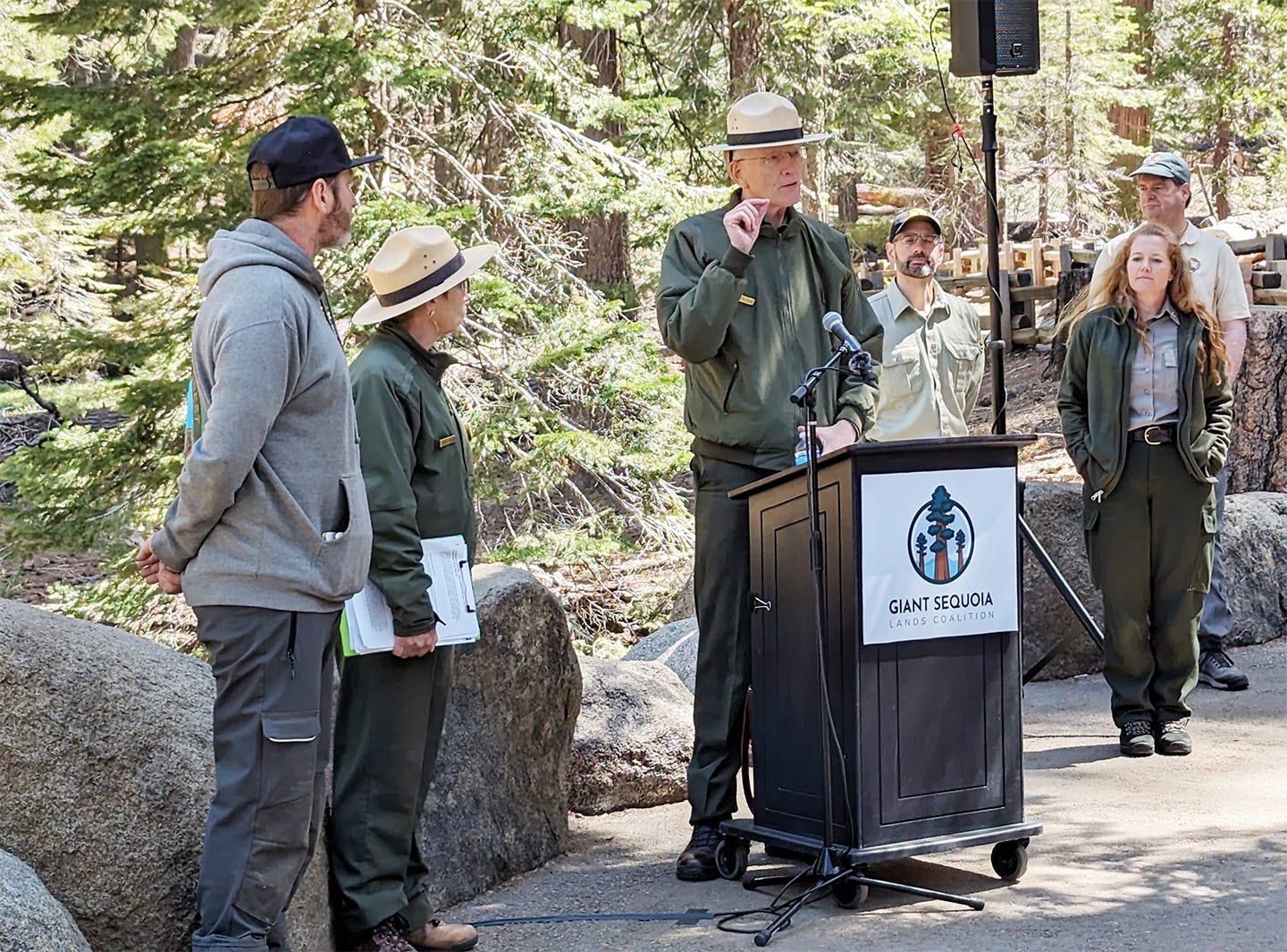
Beetles have killed at least 40 giant sequoia trees — researchers working to find out how
By Claudia Elliott
Giant Sequoia News
HOW DO YOU CHECK THE HEALTH of the largest tree in the world?
Members of the Giant Sequoia Lands Coalition gathered in Sequoia National Park on May 21 to learn more about three ways researchers are studying the General Sherman Tree and other giant sequoia groves.
The science is important, but it was also amazing to see climbers scaling the massive General Sherman tree for what may have been the first time in history.
Of specific concern is an increase in the number of Big Trees killed by beetles.
In a piece published a week ago, HERE, journalist Nancy Vigran wrote about a study underway to learn more about beetle attacks on 104 giant sequoia trees across 11 groves.
On Tuesday, Christy Brigham, chief of resources management and science at Sequoia and Kings Canyon National Parks, confirmed that a total of 40 giant sequoias “have died in a pattern that suggests that they were ultimately killed by bark beetles with an interaction with climate-driven hotter drought.”
Although California has been out of drought since 2023’s extraordinary deluge, researchers know that dry spells will return and want to learn more about the beetle and its impact on the Big Trees.
The media event coordinated by the Giant Sequoia Lands Coalition demonstrated three ways researchers are inspecting individual trees.
Climbers from the Ancient Forest Society — who are also tree physiologists and researchers — rigged the General Sherman and climbed up into the canopy to inspect branches, looking for bark beetle activity and any evidence of foliage die-back or other beetle impact on the trees. A Forest Service drone team simultaneously used drones to examine and capture images from the tree’s canopy. And GIS and data experts from the National Park Service use satellite imagery to view activity in the tree crown from above.
Following demonstrations, the experts said the General Sherman tree appears to be in good shape.
“I have good news to report,” said Anthony Ambrose, a plant ecologist and executive director of the nonprofit organization. “There does appear to be some level of beetle activity in the General Sherman tree, which is not surprising. The native bark beetle here is present throughout the forest, and it's always been here.
“We found some evidence of attempted entry holes into some of the branches … but they don't seem to be very successful. The adults that are trying to burrow into the bark don't seem to be making it very deep into the bark. And in some cases where they do get down into the live bark, the tree seems to pitch them out.
“Overall, there doesn't seem to be any impacts to the tree,” Ambrose continued. “It seems to be successfully fending them off. The tree seems to be very vigorous, the foliage is very healthy.”
Sam Prentice of the USFS worked with Larissa Perez, aviation manager at SEKI (Sequoia and Kings Canyon National Park), to perform a drone inspection of the General Sherman tree.
Prentice said Perez, operating the drone, was able to verify what Ambrose reported.
“She was able to identify some of those entry points that Anthony mentioned. And so that's just a validation of not just the nature of the technology being very fine scale, but our ability to deploy it in conjunction with what scientists are doing on the ground in order to form a multiscale approach to observations that we can then use to inform management,” he said.
He noted that researchers have developed a protocol that integrates satellite-based technologies that are near real-time for change detection and added that this allows investigation on a wide scale.
“Because, as we all know, we're not just concerned about the General Sherman or the number of named trees, but the overall population. And so satellites give us that ability to not just see what's in front of us, but to see across the landscape and then deploy our technology,” Prentice said.
Clay Jordan, superintendent of SEKI and co-chair of the Giant Sequoia Lands Coalition, said there is much more to learn about the beetle.
“I would emphasize that this beetle really hadn't been studied that much until recently because there wasn't much need,” he said, as the beetle wasn’t causing much of a problem.
“So now we have some red flags out there on the real estate; we do have some giant sequoias dying within a mile from here that were healthy not long ago.”
Addressing the issue will require continued monitoring and scientific study, he said.
Brigham also addressed what might be done to mitigate the beetle’s impact.
“We have identified a range of options that we'll be working through in a research context over the next three to five years,” she said. One option is sanitation — removing fallen branches to reduce populations of beetles on the ground.
“As crazy as it sounds, for very special trees, there's the potential that you could water the tree,” she said, to help mitigate drought impacts.
Another option is a chemical that is used on ash trees that only would affect one individual tree and the insects feeding on that tree, Brigham added.
“This is a native species in its native range,” she said. “So we don't want to be willy-nilly killing things.”
She also said there is still much to learn about the beetle.
The Sequoia bark beetle was first described in 1924, Brigham said. When giant sequoias started dying from beetle infestation around 2017, scientists began looking at the issue and trying to determine exactly what beetle was killing the trees.
“We’re learning more about the beetle ecology, what they're doing, what their lifecycle is, because that helps us design treatment measures if we need to protect individual tissue,” she said.
Another question is, how have the trees successfully defended off these beetles for millennia?
“If we can understand those mechanisms, then we can understand what trees might be vulnerable in the future and design management to hopefully address those threats.”
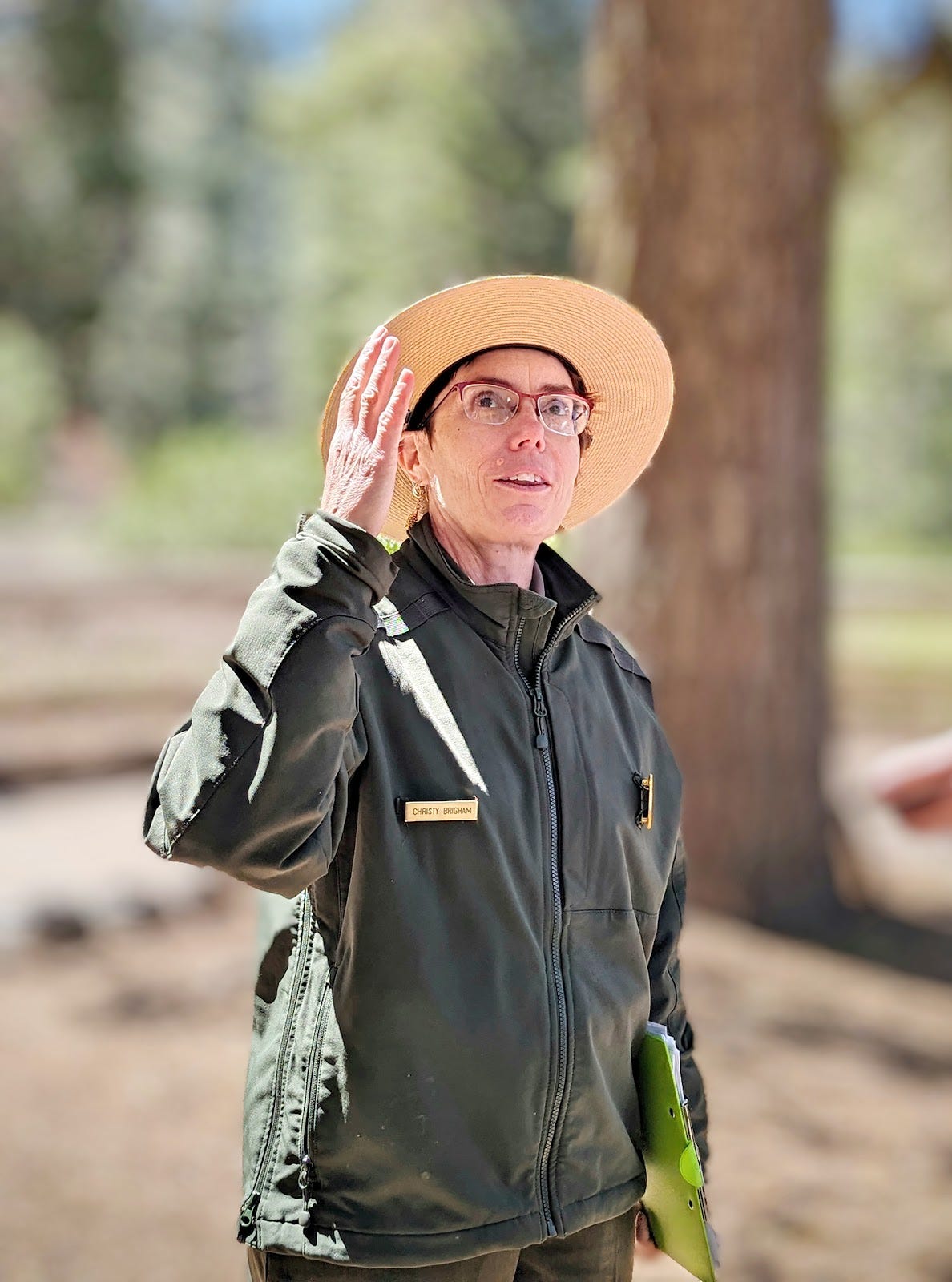
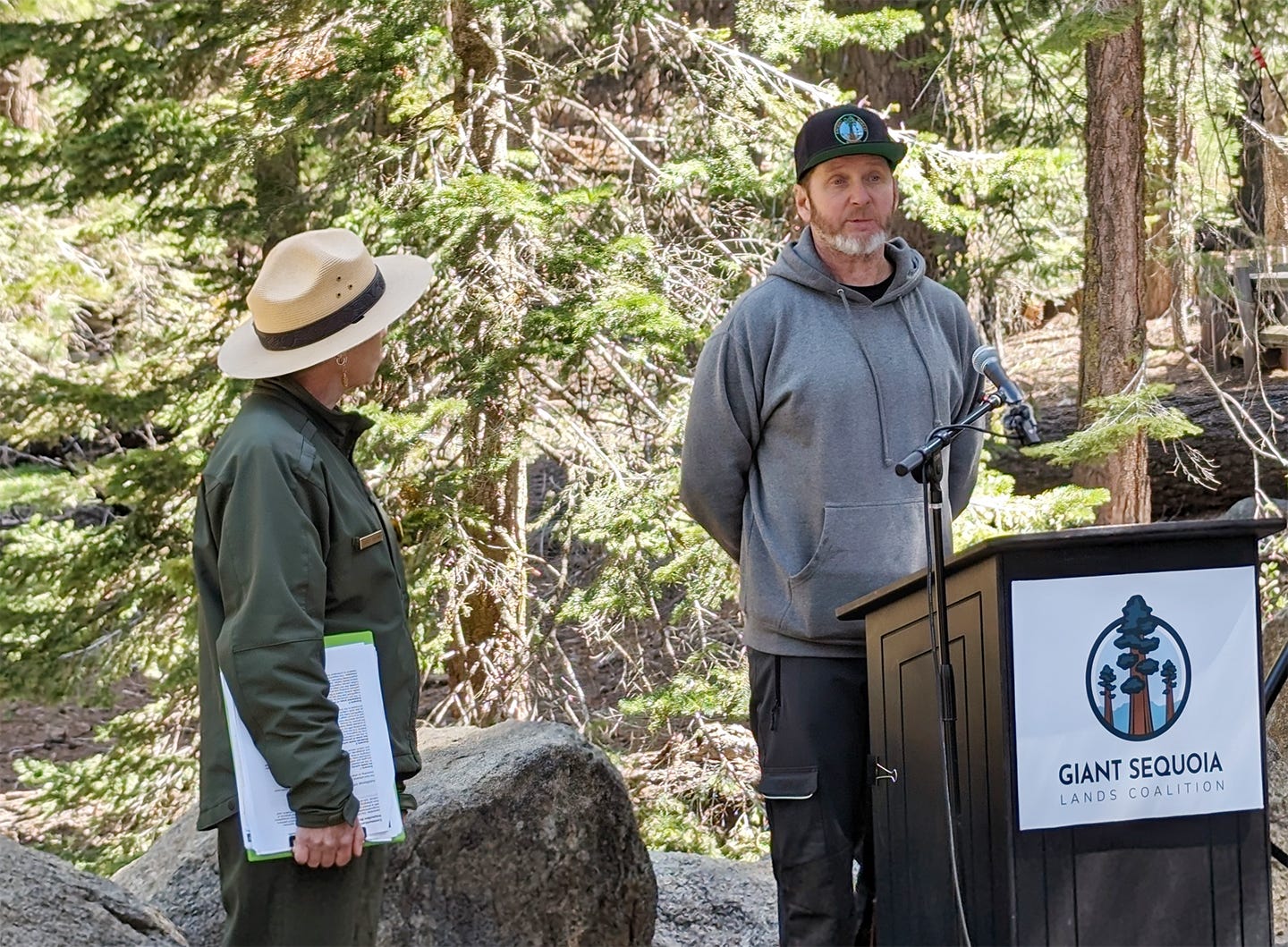
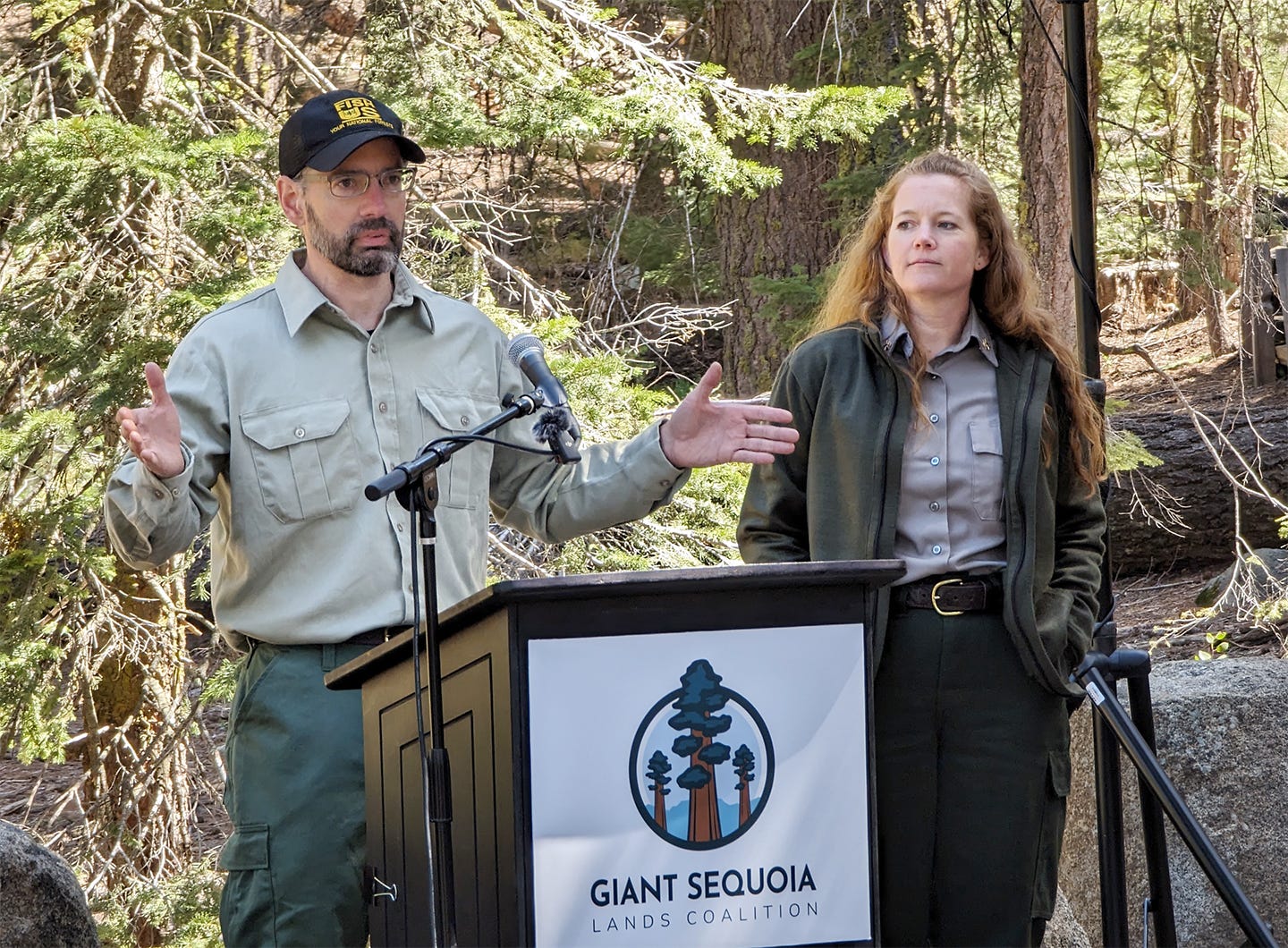
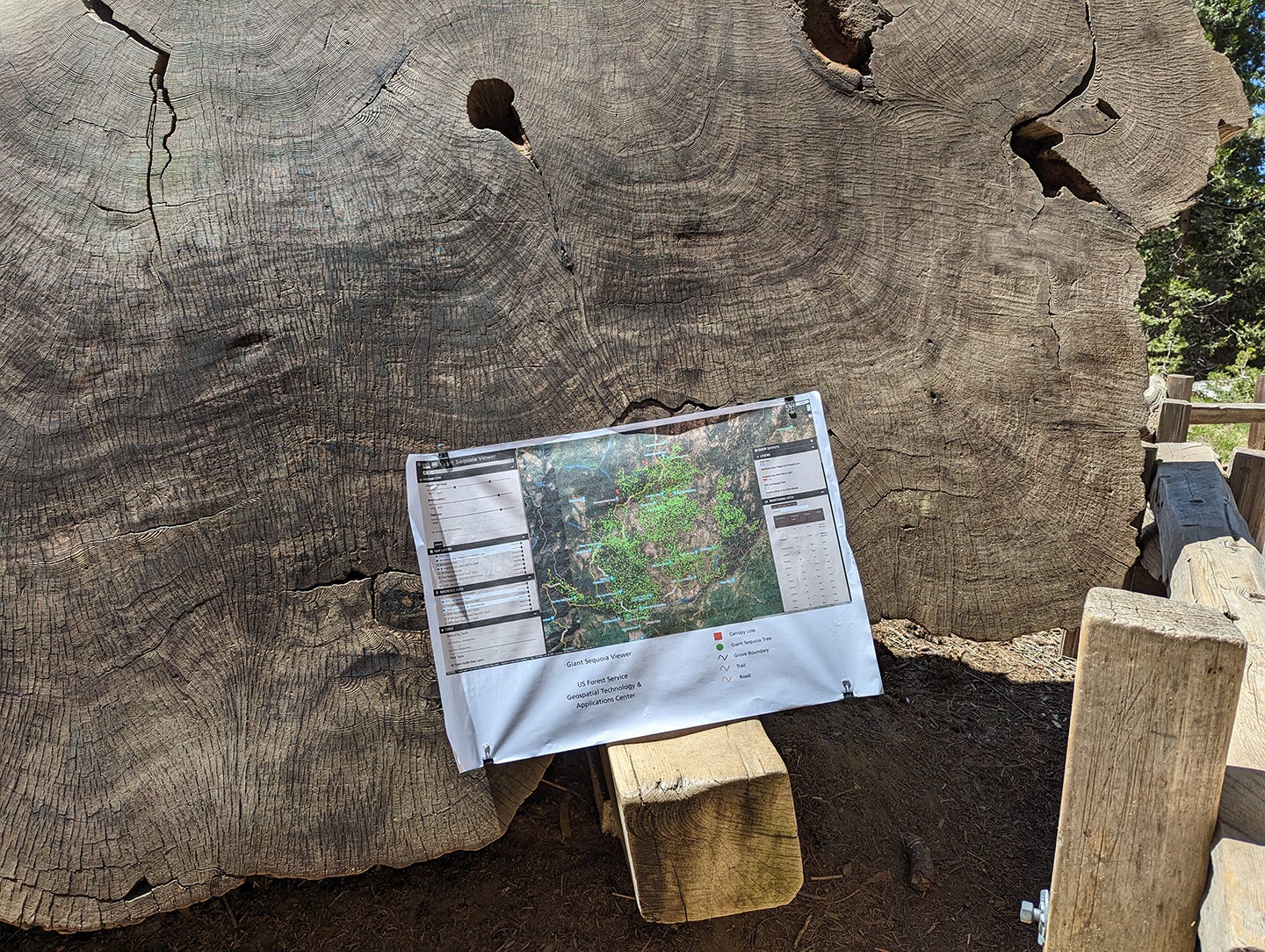
Giant Sequoia Lands Coalition
Other representatives of members of the coalition speaking at the event included Franklin Carabay of the Tule River Tribe and Kevin Conway of CalFire.
In addition to the speakers and others involved in the media presentation, representatives of several coalition members were present at the event.
Members include the Ancient Forest Society, Bureau of Land Management, CalFire, California State Parks, Save the Redwoods League, Sequoia and Kings Canyon National Parks, Sequoia National Forest/Giant Sequoia National Monument, Sequoia Parks Conservancy, Tulare County, Tule River Indian Tribe of California, USFS Geospatial Technology and Applications Center and Yosemite Conservancy.
More information about the coalition is online at giantsequoias.org.
Wildfire, water & weather update
Temperatures go up — and then they go down. That’s just how it is in California at this time of year. The best Sierra Nevada weather forecasts are at NWS Hanford, HERE, and NWS Sacramento, HERE.
A number of media outlets have reported on the impact of wildfire smoke on lakes in California based on a UC Davis study published earlier this week. You can read a story at The Hill HERE and a report about the study HERE.
Here’s an excerpt from the story:
Focusing on California’s three largest wildfire seasons on record — 2018, 2020 and 2021 — the researchers found that lakes endured an average of 33 days of high-density smoke between July and October.
“We’re looking at a scenario where for the next 100 years or longer, smoke will be a feature on the landscape,” senior author Steven Sadro, an associate professor in environmental science at the University of California, Davis said in a statement.
In two of the main study years, 2020 and 2021, medium- to high-density smoke surpassed 70 percent of the entire state in September and October, according to the study.
“What does that mean for fundamental ecology? What are the implications of those changes?” Sadro asked. “Those are the big questions we’re focused on in aquatic systems.”
Did you know you can comment here?
It’s easy to comment on items in this newsletter. Just scroll down, and you’ll find a comment box. You’re invited to join the conversation!
Thanks for reading!



